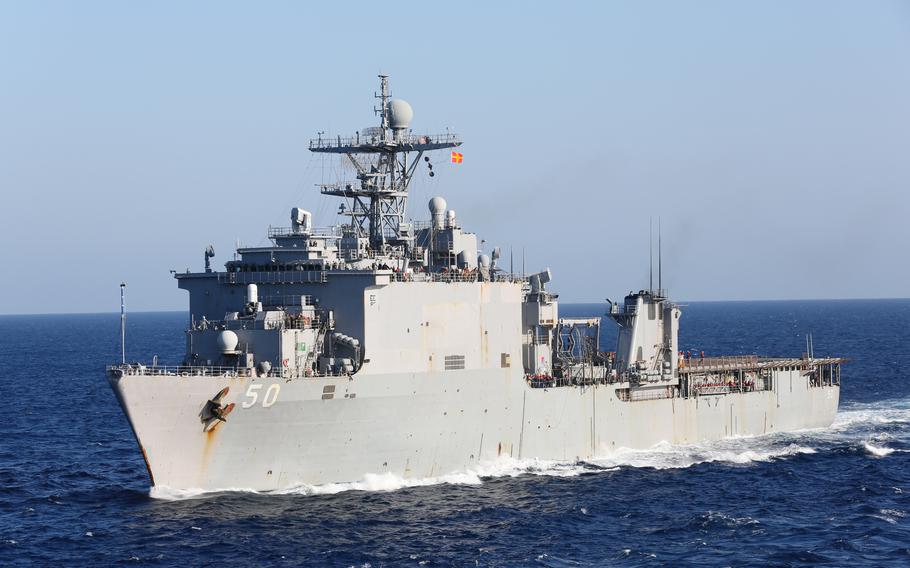.jpg/alternates/LANDSCAPE_910/2486003%201.jpg)
Sailors maneuver an amphibious resupply cargo vehicle into the well deck of the amphibious assault ship USS Bataan in 2016 in the Atlantic Ocean. (Raymond Minami/U.S. Navy)
WASHINGTON — The U.S. is deploying more aircraft, ships and troops to the Middle East to bolster security in the region amid a rise in threatening actions by Iranian forces, the Pentagon announced Thursday.
Defense Secretary Lloyd Austin ordered the deployment of a portion of the Bataan Amphibious Readiness Group with a Marine Expeditionary Unit. The force includes Marines, the USS Bataan, an amphibious assault ship, the USS Carter Hall, a dock landing ship, and associated personnel and equipment.
“These additional forces provide unique capabilities, which alongside our partners nations in the region, further safeguard the free flow of international commerce and uphold the rules based international order, and deter Iranian destabilizing activities in the region,” said Army Gen. Michael “Erik” Kurilla, who leads CENTCOM.
In the past two years, Iran has attacked, seized, or attempted seizure of nearly 20 internationally flagged merchant vessels in the Strait of Hormuz, a key global shipping channel, CENTCOM said.
The move follows the Pentagon announcement Monday that the USS Thomas Hudner, a new Arleigh Burke-class destroyer, and fighter jets, including F-35s and F-16s, were deploying to the region near the Strait of Hormuz and Gulf of Oman to defend U.S. interests.
“We have seen Iran continue to harass vessels in the Strait of Hormuz,” Pentagon spokeswoman Sabrina Singh said Monday. “So [Defense Secretary Lloyd Austin and Kurilla] felt it was appropriate to move more assets into the region.”

The dock landing ship USS Carter Hall underway in the Atlantic Ocean in 2013. (Tommy Lamkin/U.S. Navy)
The Air Force already has A-10 Thunderbolts, also known as “Warthogs,” in the region, and they have been patrolling since Iranian naval forces attempted July 5 to seize oil tankers near the waterway, even opening fire on one of the vessels. Iran backed off after the U.S. Navy intervened and the tankers continued through the Strait of Hormuz and Gulf of Oman.
U.S. military officials have said they are becoming increasingly concerned about recent maritime activity from Iran and its possible cooperation with Russia and Syria. Those three countries are aligned in the ongoing Syrian civil war between Syrian Democratic Forces and others fighting the government forces of Syrian President Bashar al-Assad. Last week, a Russian surveillance plane hovered over a U.S. base in southeastern Syria trying to collect intelligence, U.S. defense officials said, and a Russian fighter jet intercepted an American MQ-9 drone over Syria in an “unprofessional” manner. Roughly 900 U.S. service members are based in Syria to support operations against the Islamic State group and train partner forces.